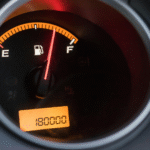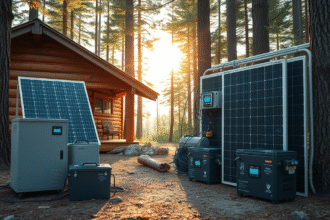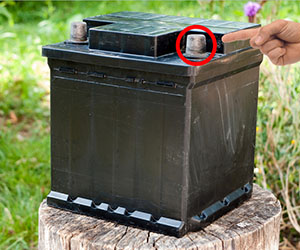Fueling the Impossible: Why Capturing Carbon Isn’t Just a Strategy—It’s the Catalyst
You ever stare at the sky and think—we’re doing all this, and still, the air’s getting thicker? There’s solar on roofs, EVs on roads, Greta on TikTok. And yet, emissions keep laughing in our faces. It’s like trying to mop up a flood with a sponge. Because maybe… just maybe, we’re throwing ourselves at everything instead of the right thing.
Let’s not pretend we can fix climate change by nibbling at the edges. What we need is a keystone. Not twelve half-solutions but one radical, root-level shift that sends shockwaves through the system. Here’s the thing: capturing carbon—not just to bury it, but to turn it into fuel—might just be that move. It’s a deceptively simple idea: take the stuff choking our skies and use it to power our world.
Sounds like alchemy? Maybe. But it’s real—and the ripple effects are wild.
1. The Villain Becomes the Hero. No, Seriously.
CO₂ is that party crasher nobody invited—but what if we made it the guest of honor? I’m talking about flipping the whole vibe. Capture it, then feed it into fuel production. You don’t erase the mess—you remix it.
Take Climeworks, for instance. These folks literally vacuum CO₂ out of thin air—like cosmic janitors—and sell it to companies making synthetic fuels. You’d think it’s sci-fi. It’s not. It’s happening in Iceland. Or somewhere even colder.
And you feel it—that weird, electric hope when you realize the worst stuff we produce can be rerouted, like a river diverted from disaster to irrigation. It’s poetic. And also, wildly practical. It’s like composting, but on a planetary scale.
2. The Loop That Changes Everything
There’s something seductive about loops. Not the tangled kind—think more elegant. Like a Möbius strip. Now picture this: You burn a fuel made from captured CO₂. That CO₂ goes back into the air—then it gets pulled back in, captured again, turned into more fuel. Boom. Circular.
You don’t need new oil wells. You don’t need exploding pipelines in the Amazon. You just need… time, air, and ingenuity.
Now, I know what you’re thinking—”But isn’t that just recycling pollution?” Exactly. It’s beautiful in its audacity. Like turning cigarette smoke into perfume. And look, it’s not perfect. Yet. But imagine a tanker ship, that big iron beast that used to guzzle bunker fuel, now running on guilt-free fire.
This loop doesn’t just solve one problem—it shrinks the whole system’s carbon appetite. We go from devourers to recyclers. From parasites to gardeners. Weird metaphor, but you get it.
3. Making Renewables Actually Work (Like, All the Time)
Here’s a brain twist: We have all this solar and wind, right? But when the sun’s blazing at noon or the wind’s losing its mind at 3 a.m., guess what? Grid says, “Uh… thanks, but we’re full.” Power wasted. Lost to the ether.
That’s where the magic kicks in. You use that extra energy to split water into hydrogen (feels very sci-fi). Then you combine that with the captured carbon. You’ve just made fuel—bottled sunshine, essentially. Tangible, storable, shippable.
It’s how you turn chaotic electrons into calm, obedient liquid. And it’s the only way wind and solar stop being seasonal guests and become permanent residents in the energy game. That extra 2 p.m. surge? It becomes tomorrow’s jet fuel.
Feels kind of like making soup out of leftovers—except your leftovers are photons and carbon molecules. Not a perfect analogy, but whatever.
4. Hard Things Don’t Have to Stay Hard
Let’s be honest—planes aren’t running on batteries anytime soon. You can’t sail a cargo ship with a solar panel and a dream. But here’s what you can do: swap out their fuel with something identical in performance, but radically cleaner.
You don’t have to invent a new engine. You just need a new recipe.
Look at Porsche. They’re already running their cars on synthetic e-fuel made from captured CO₂ and hydrogen in Patagonia (yep, Patagonia—not the jacket, the place). Their cars still roar. Still burn rubber. Only now, it’s not the planet burning along with it.
This approach—it’s not about stopping everything. It’s about redirecting momentum. You don’t tear down the highway; you just change what’s in the tank.
5. The Money’s Moving—Are You Watching?
Follow the cash. Always.
In the last year alone, companies like Occidental Petroleum (yep, a fossil fuel giant) have dropped billions into carbon capture and fuel synthesis. Governments are shoveling in subsidies. Elon’s tweeting about carbon removal prizes. And startups with names like CarbonBuilt and Air Company? They’re raising rounds faster than AI startups.
It’s not just green—it’s golden.
And here’s the ripple: new plants = new jobs. Technicians, engineers, truck drivers, people who used to work in oil fields now rigging up air capture modules in Nevada. It’s gritty, hands-on, real work—not just code and hopes.
Final Thought (or Maybe a Feeling): Start Here
I know it’s tempting to want to fix everything at once. To slap solar panels on your dog’s house, buy carbon offsets for your Spotify playlists, or go live off-grid in Oregon. I’ve felt that too—this itch to do more, to do all of it.
But what if… you just picked one lever to pull? And it was this one: capturing carbon—and using it to power the world.
It’s messy. It’s imperfect. It’s not even fully scaled yet. But neither were rockets in 1961. Or the internet in ’94.
So, let’s zoom in. Focus not on the thousand fires, but the single ember that could light something bigger. Something self-sustaining. Something circular.





2 Comments